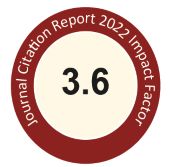Abstract
Adlay (Coix lachryma-jobi L.) is a traditional Chinese herbal medicine with various biological activities. We investigated the anti-diabetic effects of different parts of adlay seeds, including polished adlay (PA), adlay bran (AB) and dehulled adlay (DA) in a streptozotocin (STZ)/high fat diet (HFD) diabetic rat model (DM). DM rats supplemented with or without PA (43%), AB (3%), or DA (46%) diet for 8 weeks. The plasma glucose and insulin levels and the insulin resistance index (HOMA-IR) were increased in DM group; among the three adlay diets, DA has the best effects attenuating all of these alterations in DM rats. Both AB and DA alleviated diabetes-impaired glucose tolerance. The increased hepatic phosphoenolpyruvate carboxykinase protein expression in DM group was improved by all of the three adlay diets. The increased ratio of glucose-6-phosphatase to glucokinase in DM group was suppressed by DA supplementation, further suggesting DA diet is most effective among the three diets. Both AB and DA diets had beneficial effects against hepatic steatosis, with better effects observed in DA group. These results suggest that the DA diet, composed of both polished adlay and adlay bran, possesses the best potential to improve glucose homeostasis, at least in part, by alleviating hepatic glucose metabolism and steatosis.
Recommended Citation
Liu, Shing-Hwa; Wu, Wan-Hsin; Tzeng, Huei-Ping; Chiang, Wenchang; and Chiang, Meng-Tsan
(2023)
"Dehulled Adlay (Coix lachryma-jobi L.) ameliorates hepatic gluconeogenesis and steatosis in streptozotocin/high-fat diet-induced diabetic rats,"
Journal of Food and Drug Analysis: Vol. 31
:
Iss.
4
, Article 9.
Available at: https://doi.org/10.38212/2224-6614.3486
Creative Commons License

This work is licensed under a Creative Commons Attribution-Noncommercial-No Derivative Works 4.0 License.
Included in
Food Science Commons, Medicinal Chemistry and Pharmaceutics Commons, Pharmacology Commons, Toxicology Commons


Abstract Image